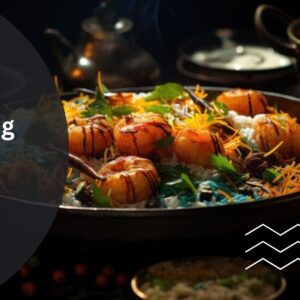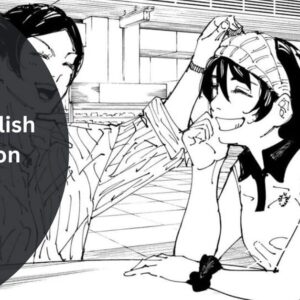In my tft games, I’ve found that choosing between Red or Blue Kindred really depends on your strategy and team composition. Red Kindred delivers high damage output that can turn the tide of battles, while Blue Kindred offers invaluable utility and survivability.
In tft, Red Kindred is best for high damage, while Blue Kindred offers extra utility and defense. Based on my experience, the choice depends on whether you need more damage or support for your team.
We will discuss the decision between Red and Blue Kindred in tft, examining how each option can impact your gameplay. Whether you’re aiming for high damage or increased utility the strengths of each build will help you make the right choice for your team.
What is Kindred Red or Blue TFT?
In TFT, Kindred is a versatile champion known for their strong damage and utility. The choice between Red and Blue Kindred refers to two distinct builds that focus on different aspects of their abilities. Blue Kindred is built for utility and survivability, using items that enhance mana regeneration and provide defensive buffs to support the team.
Choosing between Red and Blue Kindred depends on your overall strategy and the composition of your team. Red Kindred is ideal for aggressive strategies where maximizing damage is crucial, while Blue Kindred suits a more defensive approach, offering crucial support.
What Sets Red Kindred Apart from Blue Kindred in TFT?
Red Kindred stands out with its high burst damage and consistent DPS. This build focuses on items like Guinsoo’s Rageblade, Infinity Edge, and Rapid Firecannon, which enhance attack speed and critical strike chance.
In contrast, Blue Kindred emphasizes utility and team support. With items such as Seraph’s Embrace, Guardian Angel, and Redemption, Blue Kindred provides frequent ultimate use and increased survivability. This build is designed to create a protective zone for your team.
What items suit Red Kindred vs. Blue Kindred?
1. Guinsoo’s Rageblade:
This item is crucial for Red Kindred as it increases attack speed with each successive attack. Guinsoo’s Rageblade allows Kindred to stack attack speed rapidly, enhancing their overall DPS. The increased attack speed synergizes well with Kindred’s abilities.
2. Infinity Edge:
This item boosts critical strike damage, which is essential for Red Kindred to maximize their burst damage. Infinity Edge works best when combined with other critical strike items, as it significantly increases the damage of Kindred’s critical hits, making each attack more devastating.
3. Rapid Firecannon:
Rapid Firecannon provides increased attack range and attack speed. This item is particularly effective for Red Kindred as it allows them to attack from a safer distance while benefiting from faster attack speeds.
4. Bloodthirster:
Bloodthirster grants bonus attack damage and lifesteal, which helps Red Kindred sustain themselves during fights. The lifesteal component ensures that Kindred can recover health while dealing damage, improving their longevity in battles.
5. Seraph’s Embrace:
This item increases mana regeneration and provides additional ability power. Seraph’s Embrace is essential for Blue Kindred as it allows them to use their ultimate ability more frequently, providing crucial support to their team.
6. Guardian Angel:
Guardian Angel offers a revival effect and bonus attack damage. For Blue Kindred, the revival effect provides an extra chance to survive critical moments, enhancing their utility and this item helps Blue Kindred stay in the fight longer and can be pivotal in close battles.
7. Redemption:
Redemption heals all allies within its area of effect, making it a valuable item for Blue Kindred to boost team survivability. Redemption’s healing effect can turn the tide of a battle by restoring health to your team, particularly when combined with Blue Kindred’s ultimate ability.
8. Warmog’s Armor:
This item grants significant health and health regeneration. Warmog’s Armor enhances Blue Kindred’s durability, allowing them to stay on the battlefield longer. The increased health and regeneration help Blue Kindred endure extended fights.
When is Red Kindred More Effective Than Blue Kindred?
Red Kindred is more effective when your team needs a strong damage dealer to burst down opponents quickly. This build is particularly useful in scenarios where you face opponents with lower health pools or in damage-heavy metals where high output can secure quick victories.
If you’re in a game where you need to balance damage with defensive capabilities, Red Kindred becomes advantageous when the situation calls for high damage output to break through enemy lines quickly. In contrast, if your team requires additional survivability and utility.
When to Pick Red or Blue Kindred in TFT?
Choosing Red Kindred is ideal when your team’s composition and game state align with a high-damage strategy. Opt for Red Kindred if you have items that enhance attack speed and critical damage, and when you need to focus on eliminating key targets swiftly.
On the other hand, Blue Kindred should be picked when your team benefits from additional utility and survivability. This build is suited for situations where managing your team’s health and creating a protective zone is crucial.
Why choose Blue Kindred over Red Kindred in Tft?
1. Enhanced Utility:
Blue Kindred is designed to provide substantial utility and support to your team. This build focuses on maximizing the effectiveness of Kindred’s ultimate ability, “Lamb’s Respite,” which creates a zone where no units can die.
2. Increased Survivability:
This build is especially useful when facing opponents who can quickly burst down high-damage champions, as Blue Kindred’s increased survivability allows them to stay in the fight longer and continue providing valuable support.
3. Defensive Compositions:
If your team composition includes defensive champions or relies on defensive synergies, Blue Kindred can complement this strategy effectively. This support is particularly beneficial in defensive or control-oriented compositions where keeping your team alive.
4. Adaptability in Metas:
In metas that emphasize utility and team survivability over raw damage, Blue Kindred can be a more effective choice. When the game meta favors longer, drawn-out battles where sustaining your team is more important than dealing high damage.
5. Strategic Flexibility:
Blue Kindred’s build allows for greater strategic flexibility in how you approach battles. With increased mana regeneration and items that enhance survivability, Blue Kindred can fit well into various team compositions, whether they focus on crowd control, healing.
FAQs:
1. How Do You Effectively Build Kindred In Tft?
To build Kindred effectively in TFT, focus on acquiring items that enhance their strengths, such as attack speed and critical strike for Red Kindred or mana regeneration and survivability for Blue Kindred.
2. What Are The Best Team Compositions For Red Kindred?
Red Kindred excels in damage-heavy compositions. Ideal team setups include Ranger/Shadow builds to boost attack speed and damage, or an Assassin/Ranger hybrid for front-to-back combat synergy.
3. Which Champions Synergize Well With Blue Kindred?
Blue Kindred benefits from champions that enhance utility and provide defensive buffs. Synergize with Mystics like Lulu or Janna for added crowd control and healing, and include Wardens like Nautilus or Thresh for strong frontline protection.
4. How Can You Maximize Kindred’s Damage Output In Tft?
To maximize Kindred’s damage output, focus on stacking attack speed and critical strike chance with items like Guinsoo’s Rageblade and Infinity Edge. Position Kindred in the backline to stay safe while dealing damage, and ensure they receive protection from your frontline.
5. What Are Some Tips For Positioning Kindred In Tft?
Position Kindred in the backline to keep them safe from enemy threats, and adjust their placement based on opposing champions’ positioning. Use Kindred’s range to attack from a distance and move them as needed to avoid high-damage threats
Conclusion:
Red and Blue Kindred in TFT largely depends on your strategic needs and team composition. Red Kindred offers high damage potential, making it ideal for aggressive play styles that prioritize burst damage.
By understanding the unique strengths of each build and tailoring your items and positioning accordingly, you can maximize Kindred’s impact and adapt to various game scenarios for optimal performance.



![Amadine_1.6_[tnt].dmg](https://outtik.com/wp-content/uploads/2024/09/Amadine_1.6_tnt.dmg_-300x300.jpg)

